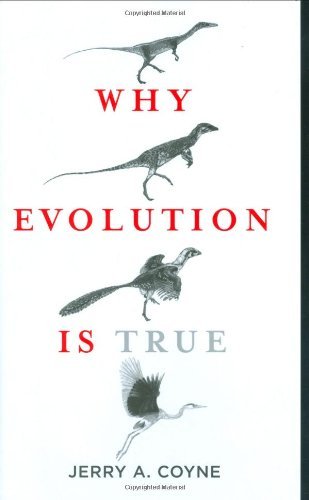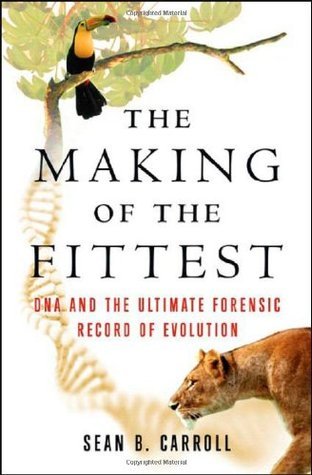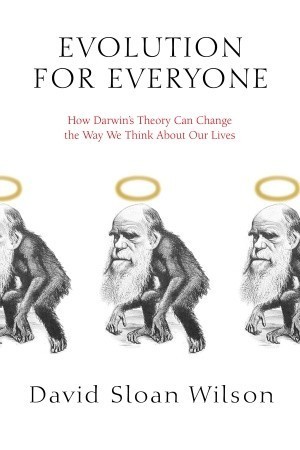
Why Evolution Is True
Book Description
Uncover the stunning narrative of life itself, where every creature bears witness to a tapestry of change and survival. In "Why Evolution Is True," Jerry A. Coyne masterfully dismantles the myths surrounding evolution, revealing the compelling evidence that connects all living things. Through captivating examples from nature and groundbreaking research, Coyne illustrates how evolution shapes the world, challenges beliefs, and unravels the mysteries of existence. This riveting exploration invites readers to witness the relentless struggle for life, adaptation, and the endless quest for survival. What if the story of our origins holds the key to understanding our future?
Quick Book Summary
"Why Evolution Is True" by Jerry A. Coyne offers a clear, accessible, and compelling argument for the reality of evolution, synthesizing decades of scientific evidence. Coyne explains how natural selection, genetic drift, and mutation drive the diversity and complexity of life. Highlighting classic and recent case studies, he illustrates how fossils, DNA, embryology, and geographic distribution all support evolution’s framework. The book addresses and refutes common misconceptions and the arguments of creationism, showing how evolutionary theory stands up to scrutiny. Coyne emphasizes not just the power of evolutionary mechanisms, but also their predictive capacity and significance in understanding both the past and future of life. Ultimately, the book is a persuasive call to recognize evolution as the unifying theme of biology.
Summary of Key Ideas
Table of Contents
Overwhelming Evidence from Multiple Scientific Fields
Jerry A. Coyne opens by establishing the robust evidence for evolution gathered from fields like genetics, paleontology, embryology, and biogeography. He illustrates how the fossil record reveals gradual changes, showing transitional forms that bridge major groups—like fish to amphibians, or reptiles to birds. Studies of DNA uncover genetic similarities and divergences that trace common ancestry. Coyne emphasizes how the nested hierarchy of life, observable in both gene sequences and anatomical traits, makes sense only in light of common descent.
Mechanisms and Processes of Evolution
The book thoroughly explores the mechanisms driving evolution. Natural selection is cast as the main engine, favoring traits that increase survival or reproduction. Coyne balances this with explanations of genetic drift, mutations, and gene flow, illustrating with examples from nature and laboratory experiments. He explores adaptations in action, such as the color changes in peppered moths, antibiotic resistance among bacteria, and the rapid diversification of species in places like the Galapagos Islands.
Transitional Fossils and the History of Life
Coyne uses the fossil record to challenge the misleading assertion that there are no "missing links." He details discoveries of transitional fossils, such as Tiktaalik linking fish and tetrapods, and Archaeopteryx bridging dinosaurs and birds. Embryology provides further support; closely related species share developmental stages and even retain vestigial structures. Biogeographical patterns—like the unique animals on islands—show how isolation and evolution go hand in hand.
Misconceptions and the Debate with Creationism
Anticipating objections, Coyne addresses creationist claims and misconceptions head-on. He clarifies how random mutations can produce complex features through cumulative small changes, and that evolution does not aim for perfection, but sufficiency for local environments. Coyne counters arguments about gaps in the fossil record and the improbability of complex organs arising, using up-to-date findings and logical reasoning.
The Importance of Evolution in Science and Everyday Life
The final segments highlight why accepting evolution matters. Coyne argues that evolutionary theory provides predictive power in medicine, agriculture, and conservation, informing practices like vaccine development and pest control. Understanding evolution, he suggests, deepens our perception of our place in nature, connecting us to all living things and providing a scientific foundation for exploring life’s mysteries. "Why Evolution Is True" thus stands as an engaging, thorough, and persuasive case for the foundational truth of evolution.
Download This Summary
Get a free PDF of this summary instantly — no email required.





